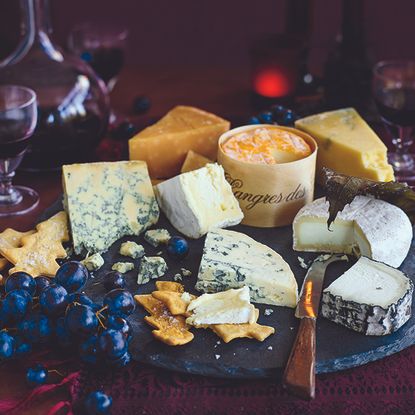
No cheeseboard will be complete without these cheeses, whether you're planning your Christmas menu or having friends over for dinner. A cheeseboard is a must; one of the main pleasures of a dinner party is the cheeseboard at the end.
If you're not sure what to go for or you want to try something new, we've put together a guide to help you create the perfect cheeseboard.
The great thing is, you don't even need to go to a specialist cheese shop; supermarkets offer such a big selection that if you're pressed for time, you can easily find fantastic cheeses from your local supermarket.
Find out how to make the perfect cheeseboard...
1. Blue Cheeses
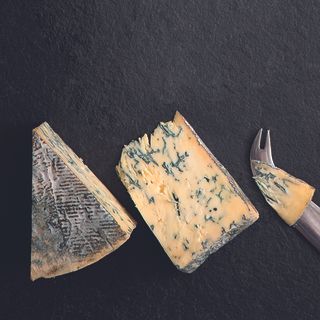
There's a blue to suit all tastes. Colston Bassett Stilton has won more awards than you can shake a stick at! This dairy has only had 4 cheesemakers in the last 100 years. It's a rich and creamy Stilton. The same dairy makes Shropshire Blue, which is milder but has a luscious, creamy taste. Over to France, Fourme d'Ambert is from the Auvergne region. It is one of the mildest of the blue cheeses with a soft, creamy texture. You could also try creamy Gorgonzola or lighter Dolcelatte.
2. Hard Cheeses

Montgomery Cheddar is unpasteurized, which contributes to its earthy, rich, complex flavour. The milk is from their own herd in Somerset and Montgomery is one of the last few truly traditional Cheddars made today. Ossau Iraty is made from unpasteurized sheep's milk in the Basque region of the French Pyrenees. It's a nutty, delicate semi-hard cheese. If your memories of Gouda hark back to the rubbery, orange cheese of 70s' diets, forget them and try an Aged Gouda, which is a 3-year-old unpasteurized cheese with nutty, caramel complex flavours. You may also like Sainsbury's Slate Cavern Aged Cheddar from its Taste the Difference range on the cheese counter. It's a rich, creamy cheese with a moderately strong flavour. The "cavern" in the title is a former slate mine in Wales where the cheese is matured.
3. Soft And Washed Rind Cheeses
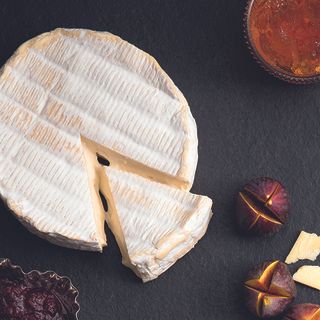
Our top pick from the British range of soft cheeses is award-winning Tunworth, hand-made by Stacey Hedges in Hampshire. It's often called a "British Camembert" but it's a star in its own right - soft, creamy, nutty with a fine, wrinkled rind. Over to France for Langres from the Champagne region, a soft cheese with a distinctive dip in the top, where the cheese makers would pour their local fizz or Marc de Champagne, a grappa-type liqueur with a big kick! It has a strong aroma with a spicy tang. You may also like Brillat Savarin, named after the famous gourmand, which is very rich and creamy, or Vacherin Mont d'Or, only made in the winter, which is soft, creamy and full-flavoured, traditionally served with a spoon rather than a knife!
4. Goats' Cheeses
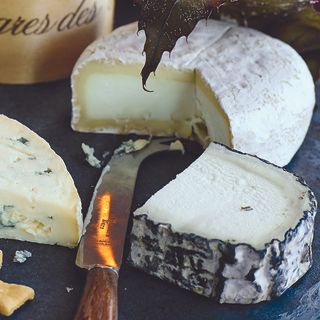
Bosworth Leaf goats' cheese is made in Shropshire and is aged for three with a distinctive lemon flavour, not too strong, not too mild. It is wrapped in a chestnut leaf, which makes it so pretty on the cheese board. Over to Spain, the Castilla y Leon region, for Monte Enebro. It can be aged up to 3 months so as it ages, it develops quite a strong bite. The texture is rich and creamy. If you like your goats' cheese with a stronger kick, you could try Ragstone, made in Herefordshire, which is aged for a bit longer so has more depth of flavour, or the famous Crottin de Chavignol in Sancerre, which again becomes more pronounced in flavour as it ages. This little cheese is perfect for grilling for a salad too.
Not sure about getting a whole cheeseboard together? Try this savoury cheesecake as an alternative.
Where To Buy
If you aren't lucky enough to have a good, local cheese shop, here are some excellent shops where you can order online:
What To Drink
Let's dismiss first off the adage that red wine and port are to be drunk with cheese. Wrong! Well sort of... hard cheeses and strong blues such as Stilton are great with reds and port, but so are some of our finest British ales. If you're eating goats' cheese, a crisp Sauvignon Blanc would be better. In fact, white wines are much better with soft and washed rind cheeses, which are on the milder side, as are dry ciders. Younger, soft blue cheeses are delicious with fizz - just try Prosecco with Gorgonzola! And a sweeter fizz such as Asti is delicious with aged Parmesan. If you like a "sticky" or dessert wine, they go brilliantly with blue cheese too. So if you're trying new cheeses, have a go at some new drinks pairings, too!
Jane Curran is a freelance food editor, stylist, writer and consultant based in Cape Town. Former food director of TI Media & woman&home. All about food, wine (dipWSET), gardening and the Arsenal.
-
 Chocolate and hazelnut roulade
Chocolate and hazelnut rouladeThis chocolate and hazelnut roulade comes with an optional Baileys Irish cream liqueur filling for an extra, festive twist
By Jen Bedloe Published
-
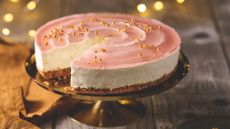 Baileys Cheesecake
Baileys CheesecakeThis no-bake Baileys cheesecake is so easy to make and perfect for cream liqueur lovers, plus it takes just 40 minutes to prepare
By Jess Meyer Published
-
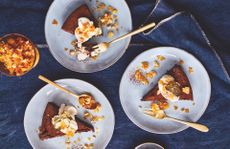 Chocolate torte with Baileys cream and salted praline
Chocolate torte with Baileys cream and salted pralineServe this rich Chocolate torte with Baileys cream and salted praline for a festive dessert that makes a popular alternative to Christmas pudding
By Jen Bedloe Published
-
 Chocolate and hazelnut roulade
Chocolate and hazelnut rouladeThis chocolate and hazelnut roulade comes with an optional Baileys Irish cream liqueur filling for an extra, festive twist
By Jen Bedloe Published
-
 Baileys Cheesecake
Baileys CheesecakeThis no-bake Baileys cheesecake is so easy to make and perfect for cream liqueur lovers, plus it takes just 40 minutes to prepare
By Jess Meyer Published
-
 Chocolate torte with Baileys cream and salted praline
Chocolate torte with Baileys cream and salted pralineServe this rich Chocolate torte with Baileys cream and salted praline for a festive dessert that makes a popular alternative to Christmas pudding
By Jen Bedloe Published
-
 Hate your toes like I do? These elegant mesh ballet flats are the cool summer shoe for me
Hate your toes like I do? These elegant mesh ballet flats are the cool summer shoe for meBallet flats are set to dominate this spring – and I'm fully on board
By Kerrie Hughes Published
-
 ‘Don’t be a ****’ - Hannah Waddingham’s on-the-nose response to photographer’s sexist ‘show me leg’ comment
‘Don’t be a ****’ - Hannah Waddingham’s on-the-nose response to photographer’s sexist ‘show me leg’ commentIs it 2024, right?
By Kerrie Hughes Published
-
 38 pictures from the extraordinary life of Queen Elizabeth II
38 pictures from the extraordinary life of Queen Elizabeth IIQueen Elizabeth’s life in pictures, from her magnificent Westminster wedding to her milestone Platinum Jubilee and plenty of heartfelt family moments
By Emma Shacklock Published
